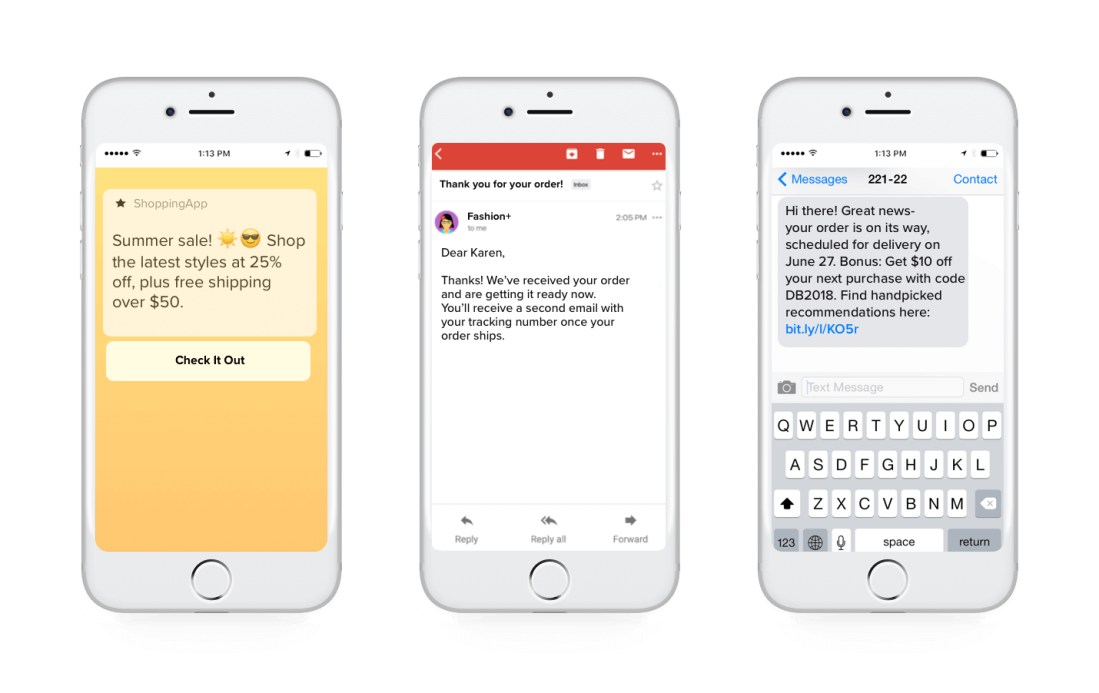The effectiveness of SMS marketing is indisputable.
Texting has the highest engagement rate of any marketing medium by far at 82% open rates. 90% of messages are read within three minutes of receipt.
And most powerful of all?
Your customers want you to use this channel. Over half of all consumers say they prefer to contact support via SMS over all other channels. And most say they prefer to get order status alerts, reservation confirmations, and appointment reminders via text.2
So — how to do SMS marketing effectively? We’ll cover the essentials of text message marketing, including best practices and examples from leading brands, to help you use this channel to engage and convert more customers.
What is SMS Marketing?
Let’s start with a simple SMS marketing definition.
SMS stands for “short message service.” These messages can be sent between phones or from a computer to a mobile device. SMS marketing involves sending marketing messages to customers via text messages.
Some of the best SMS marketing campaigns to help inform your strategy are explained below
1. Get Permission & Make Opt-out Clear
You must have permission to send users text messages. Otherwise, you’re just spamming people, which can mean irreparable damage to your brand. Not to mention breaking the law and potentially racking up significant legal fees.
Get subscribers to opt into text messaging with promotional campaigns that ask them to send a keyword to your shortcode. Or let them check a box during the checkout process alongside email subscriptions. And to encourage opt-ins, be clear about what subscribers can expect. What types of messages will they receive and how often?
For example, “Text ‘SAVINGS’ to 12345 to receive weekly coupons.” The shortcode serves as the phone number customers text the keyword to. The keyword goes in the body of the message to signify which SMS campaign they’re signing up for.
You can encourage signups on any of your current marketing channels: email, website, in-store, social media, direct mail. For example, Payless prints flyers and posts signs near the store checkout, and Pizza Hut spreads the word on Facebook.
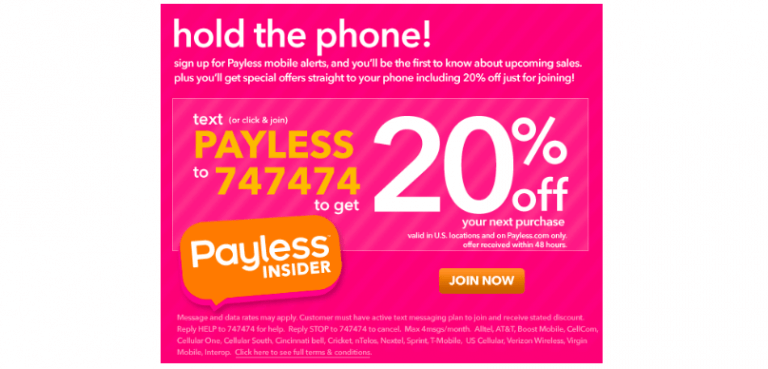
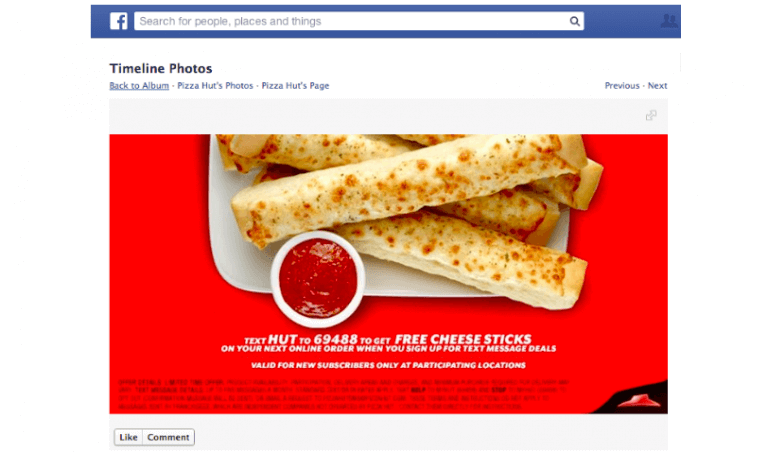
2. Know the Rules
The Cellular Telecommunications Industry Association (CTIA) requires SMS marketers to include “msg & data rates apply” in auto-reply messages. Most text marketing services will add this disclaimer automatically, but it’s on you to ensure it’s included.
3. Less is More
How many SMS is too many?
Upland Software’s in-depth analysis of ideal SMS frequency recommends starting with 4-5 messages a month and slowly increasing to 10 a month — as long each message provides real value. Of course, you should closely monitor unsubscribes for an uptick in churn to find the sweet spot for your own subscribers.
It’s also a good idea to include frequency in your welcome message so users know how often they’ll hear from you:

When it comes to message length, think short and sweet. Most carriers limit text message length to 160 characters, so the faster you get to the meat of your message the better. State value upfront, include a crystal clear call to action and use a URL shortener like goo.gl or bit.ly.
4. Timing Matters
When it comes to timing your text messages, think about your audience’s daily habits. When are they most likely to be on their phones?
According to Mobile Marketer, Mondays have the lowest response rates. Unless your message is specifically relevant to that day, avoid it.
You should also steer clear of common commute times, typically 6:30-8:30 am and 4-7 pm, when people are likely driving and unable to read or respond to texts.
In general, standard business hours of 10 am – 8 pm are most effective for SMS marketers. Just be sure to localize send times for your user’s specific time zone. No one wants a coupon code or appointment reminder at 4 am.
5. Keep it Fun!
SMS is a highly personal and informal channel, making it ideal for entertaining campaigns. Think games, promotions, polls, interactive content, and one-on-one conversations. Use it as an opportunity to deliver fun, memorable customer experiences.
Note: many SMS marketers use shortened to text speak like “ur” and “txt” in campaign copy. Feel free to do the same, as long as your message is easily readable.
Starbucks has long used SMS to delight customers with trivia games, quirky memes, and personalized rewards. This campaign from 2013 takes advantage of the immediacy of SMS by rewarding the first 100 correct responders. And it cleverly reinforces the essential role music plays in their customer experience.
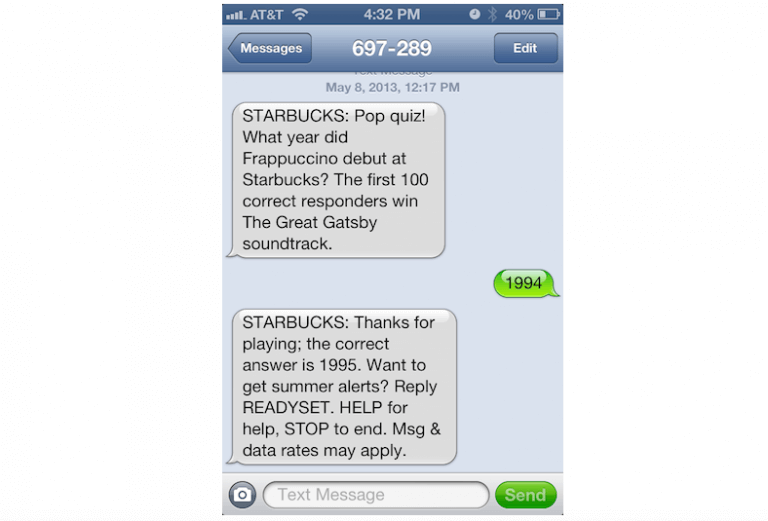
This recent campaign pairs the informal nature of SMS with summertime fun, featuring intergalactic cat gifs, silly “Pew Pew!”s, and OMGs. And it delivers real value with 50% off coupons and extended happy hours for subscribers.
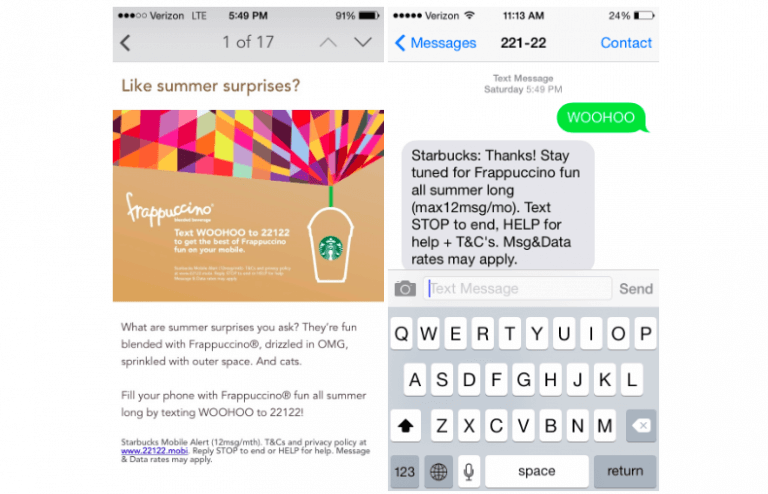
6. Segment
You wouldn’t talk to a brand new visitor the same way you would a loyal customer. The same goes for SMS. Segment your audience to ensure that each user gets relevant, valuable content.
New visitors could get free shipping or promo code, while repeat customers get early access to new products or an invite to your rewards program.
Use profile data to send birthday promotions, new customer discounts, or location-based campaigns to give each user a personalized experience and up conversions.
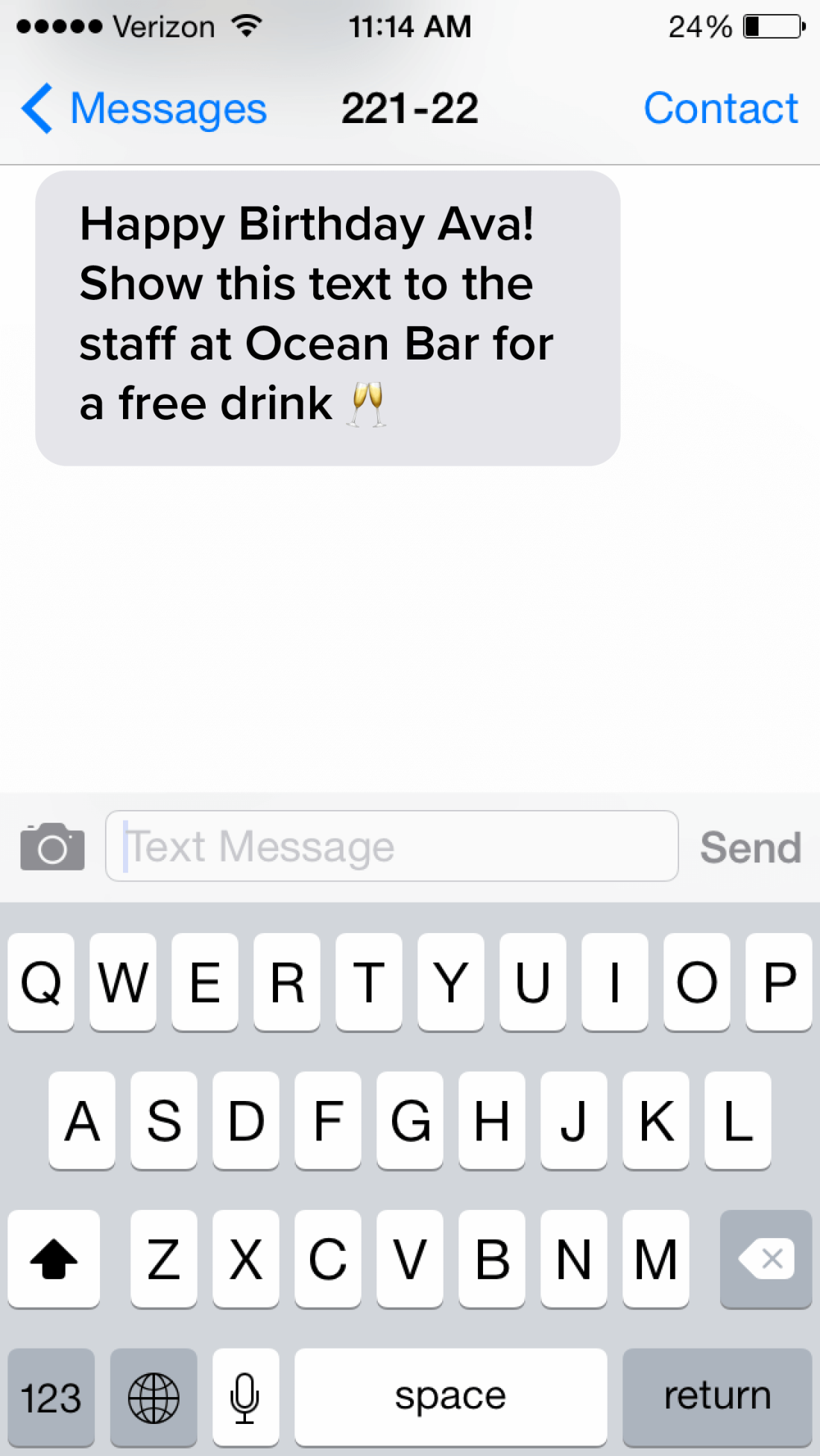
7. Instill Urgency
One of the central benefits of SMS is immediacy. So use that to your advantage.
Pair SMS with location-based campaigns to send tempting promotions to users when they arrive or pass by your store. Include phrases like “valid till,” “expires soon,” or “today only” in your message copy to create a sense of urgency and prompt recipients to act.
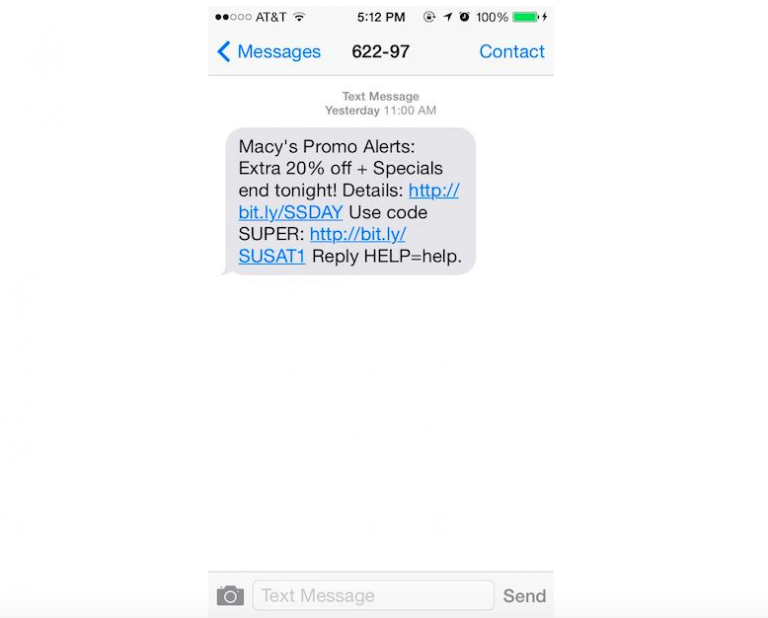
8. Make It Exclusive
One way to keep subscribers from opting out of your SMS campaigns? Send exclusive offers or VIP content they won’t get on any other channel.
AMC Theaters uses SMS to keep its Stubs club members up to date on their rewards points and membership benefits. Subscribers get access to free movie screenings, special event invites concession discounts and movie swag giveaways.
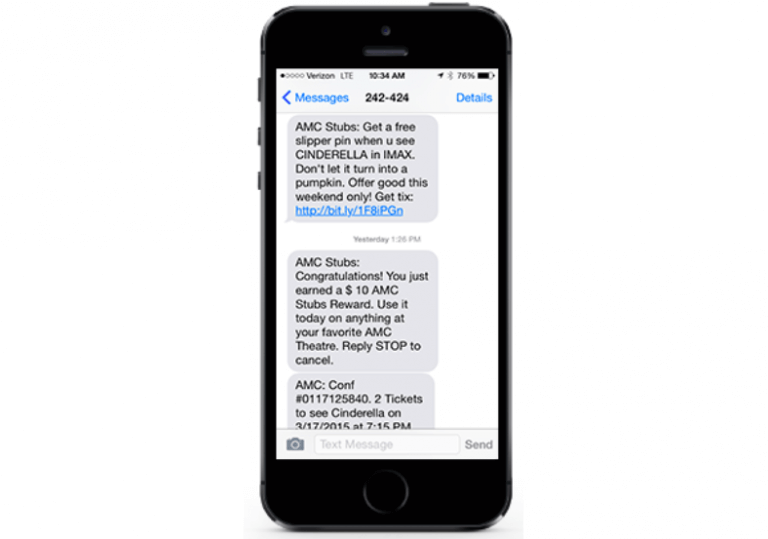
9. Track Open & Click Rates
As with any other medium, you should track how users are engaging with your text campaigns. How many open your message? How many clicks the link or send a response? How many opt-out?
According to the current SMS marketing industry benchmarks, 70% of customers open SMS messages within 60 minutes. 19% of recipients click on a link.
Like any other channel, you should A/B test messaging, audiences, and timing to keep improving your SMS marketing strategy.
10. Use SMS as Part of an Omnichannel Strategy
Today’s mobile users demand a consistent customer experience regardless of channel or device. An omnichannel strategy is essential to building a strong, lasting relationship with your brand.
Your SMS campaigns shouldn’t be one-offs. They should complement and connect with your push, email, and social campaigns to reinforce customer relationships and provide a seamless experience.